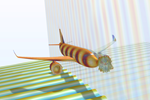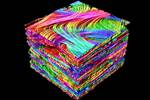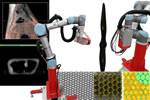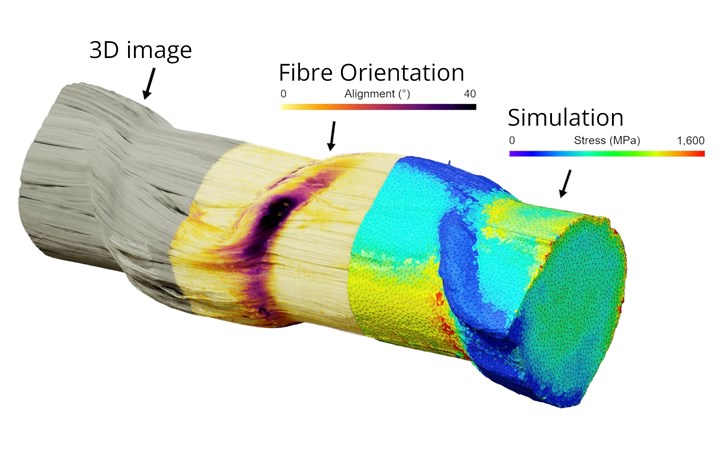New Frontier Technologies launches digital twinning, high-fidelity simulation capability
3D imaging and analysis capability illustrates detailed, quality characterization and performance simulation of composites and other advanced materials that properly captures the as-manufactured component.
New Frontier Technologies Pty Ltd. (Canberra, Australia), a startup company that provides bespoke design, manufacture and 3D evaluation of carbon fiber composites and other advanced materials, has developed a capability for digital twinning of composites for high-resolution quality characterization and high-fidelity performance simulation.
As the use of virtual engineering environments and development of digital certification increases in sectors that rely on composite materials and structures, the demand for high-resolution 3D datasets for quality characterization and performance evaluation will also increase, the company reports. New Frontier Technologies’ 3D digital twinning capability is based on X-ray computed tomography (CT) to image and analyze — at micron resolution — critical quality characteristics of composites such as void size and distribution, and fiber orientation. A finite element mesh that captures these characteristics is then generated for high-fidelity simulation. This enables performance evaluation of the as-manufactured component rather than an idealized model.
“The power of this capability is that we can analyze and simulate the performance of what has actually been made, rather than what was hoped for,” says Paul Compston, director and CEO of New Frontier. “It is an enabler for rapid design iterations and performance evaluation, and for digital certification processes that are increasingly important for the aerospace sector.”
Compston continues, “Our current partners and clients are using our digital twinning capability where it is essential to confirm that the manufactured composite components will perform as required. In the space sector for example, void content thresholds must be met in satellite structures to avoid out-gassing problems, and for precision instrumentation, the fiber orientation determines thermal performance and hence dimensional stability. This capability can provide, in 3D, the critical information required to assure quality and performance of the composite [material] in such high-value applications.”
Application of this technology is also ideal during product development phases, where information for rapid design iterations and process parameter optimization is required. Areas with high-geometrical complexity, or where high stress concentrations and complex load cases are expected, can be assessed in intimate detail. The effect of critical features can then be simulated with high-fidelity, which minimizes the need for time-consuming, expensive inspection and testing.
3D imaging can be undertaken on components up to 1 meter in length and 300 millimeters in width or diameter. For larger dimensions, a multiscale modeling approach can be taken, where high-resolution results from representative areas are applied to the whole structure.
Related Content
-
Improving carbon fiber SMC simulation for aerospace parts
Simutence and Engenuity demonstrate a virtual process chain enabling evaluation of process-induced fiber orientations for improved structural simulation and failure load prediction of a composite wing rib.
-
Active core molding: A new way to make composite parts
Koridion expandable material is combined with induction-heated molds to make high-quality, complex-shaped parts in minutes with 40% less material and 90% less energy, unlocking new possibilities in design and production.
-
Bladder-assisted compression molding derivative produces complex, autoclave-quality automotive parts
HP Composites’ AirPower technology enables high-rate CFRP roof production with 50% energy savings for the Maserati MC20.
















